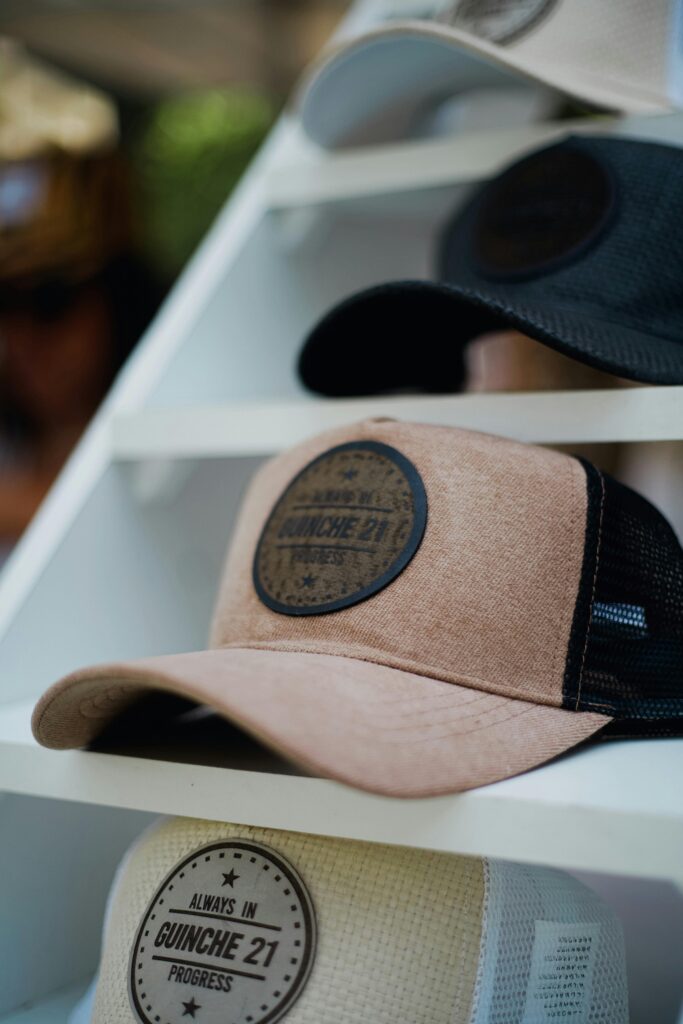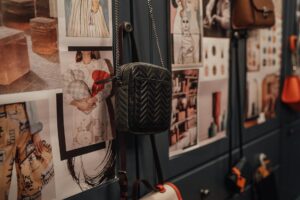This buyer playbook helps retail buyers, merch teams, and event coordinators scope wholesale trucker hat orders from sample to bulk. It gives an editable PO checklist, realistic MOQ bands by style, and a lead‑time planner you can use to set expectations and avoid costly delays.
Key takeaways
- Order and approve one pre‑production sample before issuing a bulk PO. Record approval in writing.
- MOQs vary by style and trim. Specify crown type, bill, closure, and decoration on the PO so the supplier can quote accurately.
- Common pitfall: approving color from screen images only. Fix: require a physical sample or swatch and an agreed color tolerance.
Quick compliance checklist
- Confirm trademarks and licensing before production. All trademarks are property of their respective owners. This article is informational and implies no affiliation or endorsement.
- Request current lab test reports for colorfastness and rub/abrasion where relevant (see AATCC guidance for textile test methods: AATCC test methods).
- Require a pre‑production sample and a documented color tolerance before approving bulk. For safety and consumer product requirements, check the U.S. Consumer Product Safety Commission guidance for businesses: CPSC business guidance.
- Ask suppliers for a current Restricted Substances List (RSL) report and any applicable REACH or regional compliance statements (see ECHA guidance on chemical restrictions: ECHA / REACH overview).
Wholesale workflow and lead‑time planner
Use a staged workflow: inquiry → sample → sample approval → bulk PO → production → final QA → shipping. Capture each stage on the PO and in the supplier confirmation.

Keep schedule checkpoints and acceptance criteria for each stage. Write dates and responsible contacts on the PO so the supplier cannot rely on verbal timelines.
Planning notes
- Ask suppliers for separate sample and bulk quotes. The sample quote should list sample fees, lead time, and shipping.
- Confirm whether decoration (embroidery or patch) requires separate tooling or setup fees and whether those fees are per color or per design.
- Agree in writing what constitutes sample approval: photos, dimensional checks, and signed acceptance of color and decoration placement.
- [Experience Note] Faster turnarounds typically cost more and may require prioritized scheduling or air freight. Negotiate who pays for expedited setup and shipment.
Lead‑time expectations (how to set realistic windows)
Lead times depend on factory workload, decoration complexity, and shipping mode. Rather than fixed days, plan in bands and lock dates with deposits:
- Sample phase: plan for a short, agreed window for a pre‑production sample. Ask the factory for exact calendar days in writing.
- Production phase: expect longer windows for trimmed hats (heavy embroidery, patches, custom foam fronts) than for blank or simple embroidered hats.
- Shipping: add transit and inland handling days based on the shipping mode you select (sea vs air).
[Experience Note] Always build a buffer for inspection and rework. A locked ship week with a final inspection date prevents last‑minute ship‑by surprises.
More procurement templates and checklists are available in our quality checks resources.
Practical PO fields to include
- Buyer PO number, buyer contact, and supplier contact.
- SKU / style name, crown type (e.g., foam front, mid crown), bill style (curved, flat), and closure type (snapback, adjustable strap).
- Color: provide Pantone codes and state whether the code is a target swatch or required match to an approved sample.
- Size breakdown and total units by SKU/color.
- Decoration: method (embroidery, woven patch, printed heat transfer), max stitch area or patch diameter, artwork file formats (AI/EPS/SVG), and expected stitch count or proof photo.
- Packaging: polybag per unit, hangtag text, label placement, inner box qty, and master carton dimensions and weight.
- Price per unit, currency, incoterm, payment terms, deposit %, and final payment trigger (inspection passed).
- Production and ship dates, inspection plan, acceptable defect rate, and corrective action timeline.
MOQ bands by hat style and inspection checklist
MOQs are not universal. Use these practical bands as a buyer framework rather than fixed supplier rules:
- Low‑complexity hats (blank, simple embroidery): generally the lowest effective MOQ. Consolidating colorways across SKUs lowers cost per color.
- Mid‑complexity hats (dense embroidery, single woven patch): higher MOQ or higher per‑unit price to cover setup and stitch time.
- High‑complexity hats (multi‑panel foam fronts, large patches, specialty trims): highest MOQ and the greatest setup lead time.
[Experience Note] Suppliers often quote MOQs per decoration method. Ask for an MOQ table that shows unit price at logical bands so you can compare total landed cost.
Pre‑shipment inspection checklist
- Confirm approved sample versus bulk: check crown shape, bill shape, closure, and overall fit.
- Color: compare to the approved physical sample. If color is critical, request instrumental color measurement and note agreement on tolerance.
- Decoration: placement, stitch quality, loose threads, and patch backing adhesion.
- Labeling and packaging: correct tags, care labels, polybagging, and carton counts.
- Random pull count and allowable defect rate agreed on the PO.

FAQ
What are realistic MOQs for different trucker hat styles?
MOQs depend on decoration and trim complexity. Expect lower effective MOQs for blank or simply embroidered hats and higher MOQs for heavy embroidery or custom patches. Ask suppliers for an MOQ vs price table so you can compare bands.
How long do samples and bulk production usually take?
Lead time varies by factory capacity and decoration. Ask suppliers for a firm calendar for the sample and bulk phases and include these dates on the PO. Build an inspection buffer before the committed ship date.
What fields must be on a PO to avoid rework?
Include SKU, crown and bill type, closure, Pantone color codes, size breakdown, decoration files and specs, packaging details, price, ship dates, payment terms, inspection criteria, and acceptable defect rate. Attach dimensional drawings and artwork files.
How do I limit color and decoration risk?
Require a physical approved sample or swatch and define acceptance criteria in writing. Request lab reports for colorfastness when color performance matters (see AATCC test methods).
What should be inspected before shipment?
Check approved‑sample match, color, decoration placement and stitch quality, label and packaging accuracy, carton counts, and perform an agreed random pull sample for defects.




